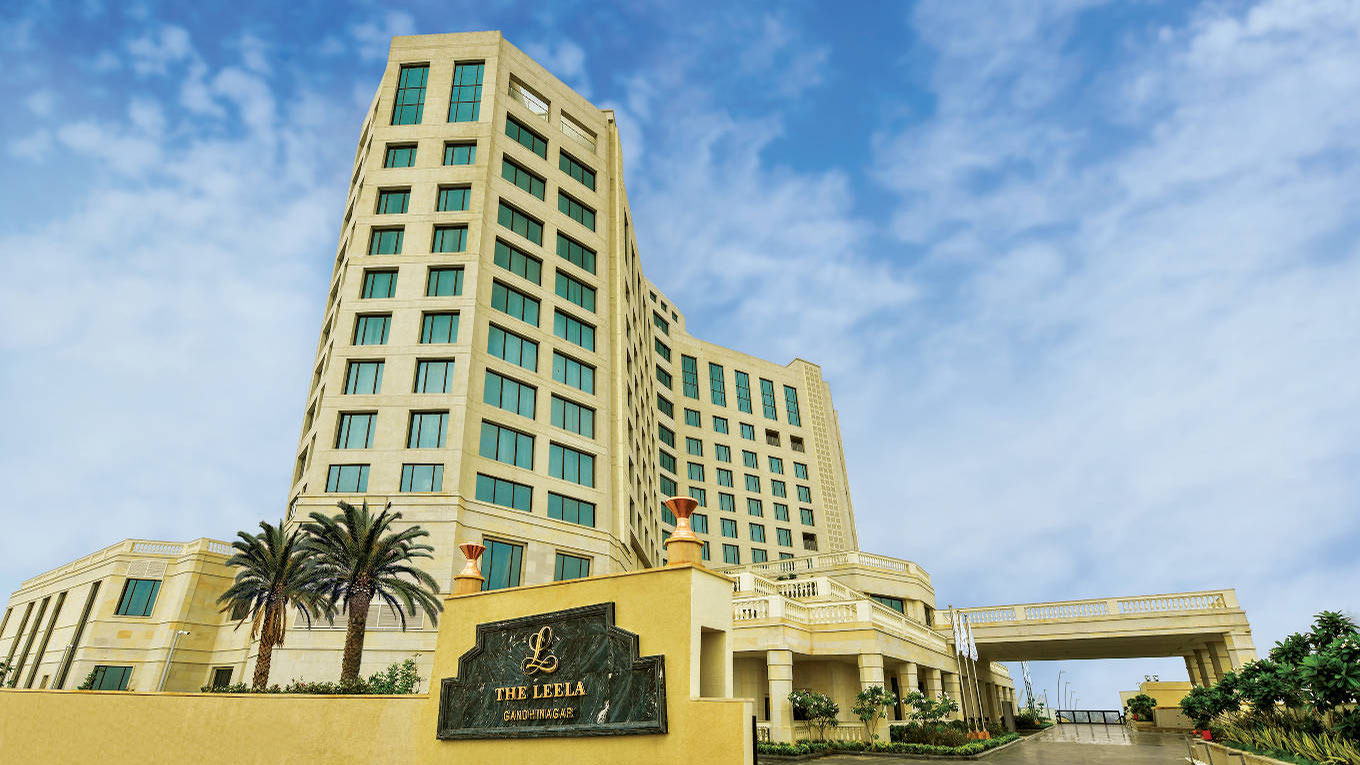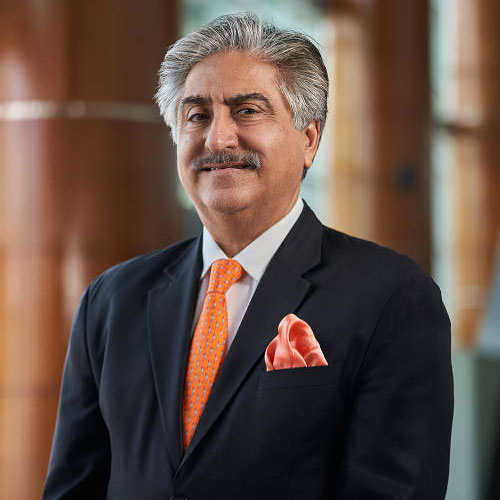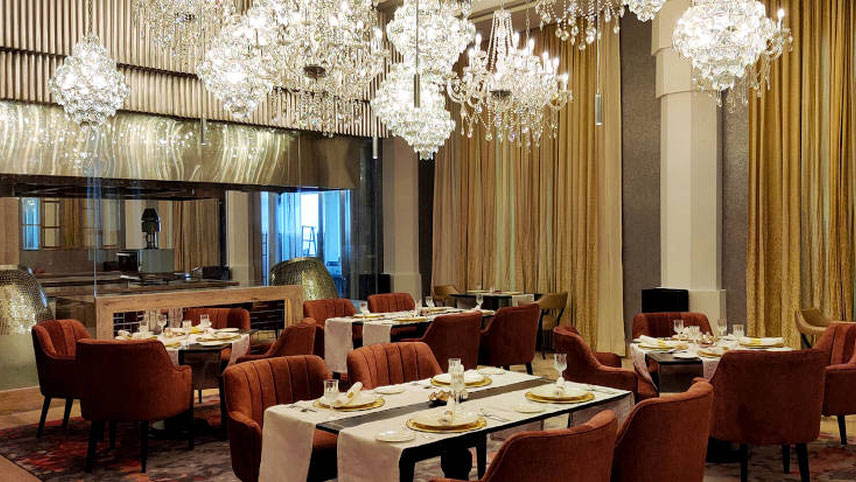A hotel atop a railway station? Yes, you read it right, the newly opened Leela Gandhinagar has been built in the airspace above the station. It might take some effort for you to wrap your head around this unique concept, but easily the most striking architectural feature of the hotel is that, in an almost Howard Roark-esque way, it shoots up in the sky; and there is no other building or anything else approaching that height on the horizon. The story of The Leela Gandhinagar needs some context. Named after the father of the nation, Gandhinagar replaced Ahmedabad as the capital of Gujarat in 1970 (the state itself had been carved out of the erstwhile Bombay state a decade earlier). While the state government did shift to this new town about 25 km north of Ahmedabad, for decades it remained what in India is referred to as a ‘retirement town’. Of late, however, it has seen a spurt in activity, among which is an ambitious showcase of a string of structures at its core. Stretching east to west, this includes the seat of the state government, the Sachivalaya, with the Sabarmati river to its east. A park stretches westwards and, at the other end, is a convention centre, the Mahatma Mandir Convention Centre (MMCC). Immediately further west, still in a line, is a museum on Gandhi called Dandi Kutir. Right next to it is The Leela Gandhinagar. Yes, if the layout reminds you of Washington’s National Mall or, nearer home, Delhi’s Rajpath aka central vista, stretching from the Rashtrapati Bhawan to India Gate and National Stadium and the (Yamuna) river beyond, you get it. The entire stretch is designed to visually impress. The 10-storey three-winged hotel floats 22 metres above the station, so effectively add about six storeys to get the right height perspective. The bottom two floors of the hotel have public spaces, while most of the upper eight floors are residential. The top two floors are not functional yet, but expected to open soon. The hotel is owned jointly by the state government and the government of India (via Indian Railways, on whose land/airspace it is built) and managed by the Leela. Jaideep Anand, vice-president & general manager, The Leela Gandhinagar and Mahatma Mandir Exhibition & Convention Centre, is bullish about the future of the hotel. “Connectivity is the key and we have 11 international airlines coming to Gujarat,” he points out. “Gujarat has good infrastructure and Gujaratis are the largest non-resident Indian community; the average rates in the city are competitive, which is a huge advantage for the city.” Anand also expects the hotel to be a leader in the social MICE space. “Gujaratis spend the most on weddings, and non-resident Gujaratis come back home for weddings,” stresses Anand. He admits that Covid’s impact has thrown the industry into an uncharted territory, with a number of cancellations or scaling down of events. “We are tightening our pockets, trying to reduce our fixed costs, trying to bring our break even as low as possible. Fortunately, since we opened, we have become a destination for food and for weekend travel. We have high occupancies on weekends.”
-

The Leela Gandhinagar: majestic presence



































